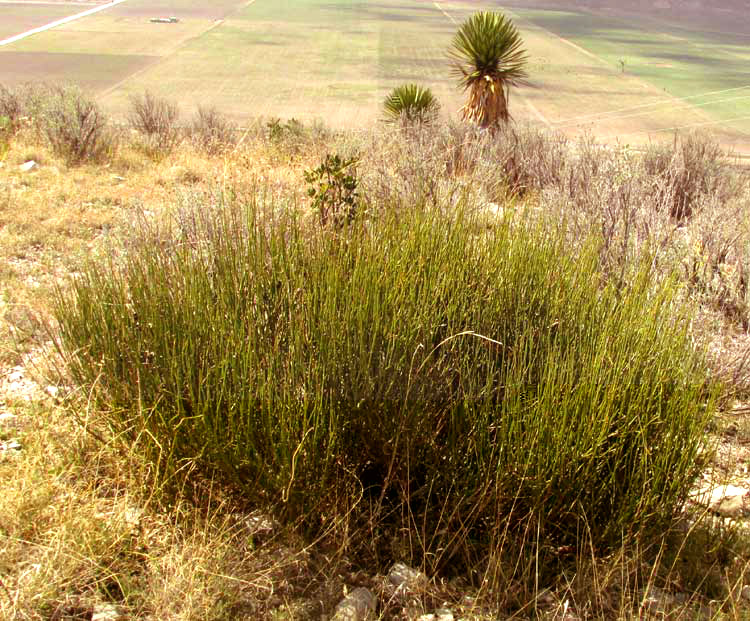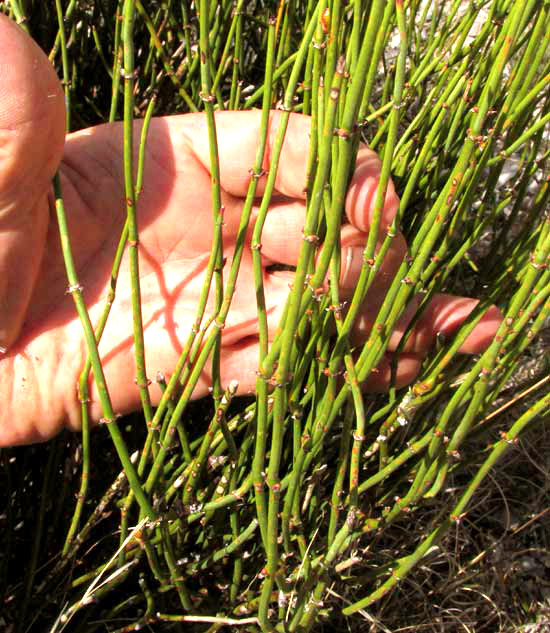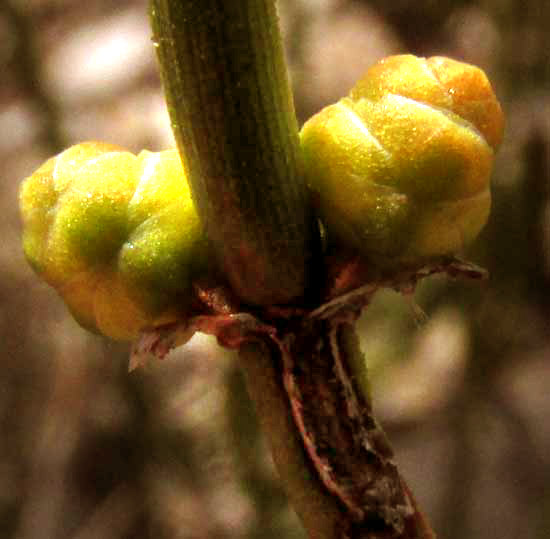Excerpts from Jim Conrad's
Naturalist Newsletter
from the May 3, 2018 Newsletter with notes from a camping trip in Coahuila state, MÉXICO
MORMON TEA IN COAHUILA
During my recent camping trip, a month ago on April 5th, in the highlands east of Saltillo I started out hiking on a valley floor, then climbed a small mountain that was grassy and scrubby at its base, but forested on top. About halfway up, at ±7000 feet in elevation (2100m), where trees were just starting to appear, I found an old friend from my days of wandering the western US's highland deserts. It was what's known up north as Mormon Tea, and, below, you can see a healthy bunch of it, the intensively farmed valley and some tree yuccas in the background:

Mormon Tea, genus Ephedra, of the Mormon Tea Family, the Ephedraceae, looks like a lot slender, green, leafless stems crammed too close together. Up closer there's not much to change that impression, as shown below:

Up north, especially at the edges of streams and other wetlands, we have something similar looking, called horsetails, genus Equisetum, but the similarity is purely coincidental. Horsetails are spore-produces, like ferns, while Mormon Tea is a gymnosperm, like pines and firs. You might enjoy comparing the above pictures with those of some horsetails we've seen in Texas, at www.backyardnature.net/n/x/equisetm.htm
Five or six Ephedra species are listed for Coahuila. Though an excellent treatment of Ephedra species in Mexico is available online, without having mature female cones I'm unable to say which species appears in our photographs. Our plants did bear immature cones, shown below:

Supposedly the Mormons once brewed tea from the Mormon Tea bush. When I was camping in Nevada's highland deserts, I made tea from the bush, too, and it was good on a chilly morning. Later I learned that the genus Ephedra is famously medicinal. The earliest uses for Ephedra species for specific illnesses date back to 5000 BC, and even today in China three Ephedra species are grown commercially as sources of pharmaceutical compounds.
Traditionally the compound was used for symptoms of cold and flu, including nasal congestion, cough, fever, and bronchitis, as well as for hay fever. I stopped drinking Mormon Tea when in 2004 the USFDA banned over-the-counter supplements containing the compound ephedra, derived from Ephedra plants. Until that time Mormon Tea had been sold as an herbal energy booster, weight-loss supplement and athletic performance enhancer. Lab tests are inconclusive about the compound's effectiveness, but it is known that products combining ephedra with caffeine dramatically increase the chances of adverse side effects such as strokes and heart arrhythmia.